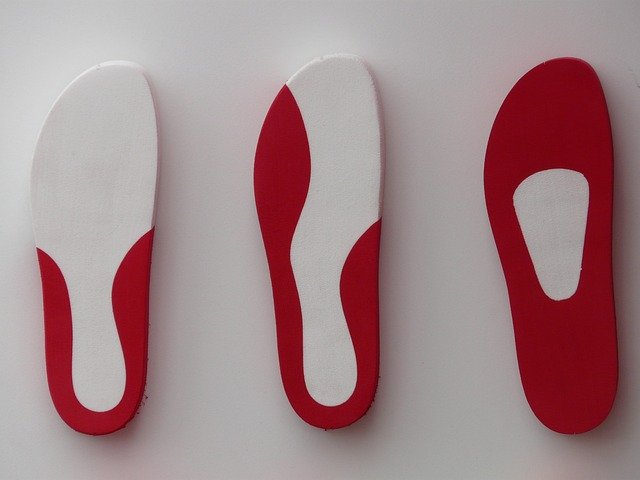Understanding Orthopedic Shoes and Their Role in Foot Health
Orthopedic shoes are specially designed footwear that provides additional support, cushioning, and stability for individuals dealing with various foot conditions or seeking to maintain optimal foot health. Unlike standard shoes, these supportive options address specific biomechanical needs, helping to alleviate pain, correct alignment issues, and prevent future complications. Whether you're managing a chronic condition or simply prioritizing comfort during daily activities, understanding how orthopedic footwear works can guide you toward better mobility and long-term wellness.

Foot health is often overlooked until discomfort or pain disrupts daily life. Orthopedic shoes offer a practical solution for those experiencing foot problems or wanting to prevent them. These specialized shoes are engineered with features that promote proper alignment, distribute weight evenly, and reduce stress on joints and muscles. From individuals with plantar fasciitis to those recovering from injuries, orthopedic footwear serves a wide range of needs while maintaining style and functionality.
Overview of Orthopedic Shoes and Their Purpose in Maintaining Foot Health
Orthopedic shoes are crafted with specific structural elements that distinguish them from regular footwear. They typically include reinforced arch support, deeper toe boxes, cushioned insoles, and firm heel counters. These features work together to stabilize the foot, improve gait mechanics, and reduce pressure on sensitive areas. The primary purpose is to accommodate foot deformities, provide relief from chronic conditions, and support recovery from injuries. Medical professionals often recommend orthopedic shoes for patients with diabetes, arthritis, bunions, hammertoes, or flat feet. By addressing the root causes of discomfort rather than masking symptoms, these shoes play a crucial role in maintaining overall foot health and preventing further complications.
Key Benefits of Supportive Footwear in Improving Posture and Reducing Strain
The benefits of wearing supportive footwear extend beyond the feet themselves. Proper foot alignment directly influences posture, as the feet serve as the foundation for the entire body. When feet are properly supported, the ankles, knees, hips, and spine naturally align, reducing compensatory strain throughout the musculoskeletal system. Orthopedic shoes help distribute body weight evenly, minimizing pressure points that can lead to fatigue and discomfort. This is particularly beneficial for individuals who spend long hours standing or walking. Additionally, the shock-absorbing properties of quality orthopedic footwear reduce impact forces during movement, protecting joints from excessive wear and tear. Many users report decreased lower back pain, improved balance, and enhanced overall comfort when transitioning to supportive footwear.
Different Types of Orthopedic Shoes Designed for Various Foot Conditions and Lifestyles
Orthopedic footwear comes in diverse styles to accommodate different needs and preferences. Diabetic shoes feature extra depth and seamless interiors to prevent irritation and ulcers. Motion control shoes are designed for individuals with overpronation, providing stability through reinforced midsoles and structured support. Rocker-bottom shoes facilitate natural gait patterns and reduce pressure on the forefoot, making them ideal for those with arthritis or metatarsalgia. Custom orthopedic shoes can be molded to fit specific foot shapes and accommodate severe deformities. Beyond medical-grade options, many brands now offer orthopedic dress shoes, athletic shoes, sandals, and casual footwear that blend therapeutic benefits with contemporary design. This variety ensures that individuals can find appropriate support for work, exercise, formal occasions, and everyday activities without sacrificing style or comfort.
Long-Term Benefits of Investing in Supportive Footwear for Overall Mobility and Joint Health
Investing in quality orthopedic shoes yields significant long-term advantages for mobility and joint preservation. By providing consistent support and proper alignment, these shoes help prevent the progression of existing conditions and reduce the risk of developing new problems. Regular use can slow the deterioration of cartilage in weight-bearing joints, potentially delaying or preventing the need for surgical interventions. Improved gait mechanics reduce energy expenditure during walking, allowing individuals to remain active for longer periods without fatigue. This sustained mobility contributes to better cardiovascular health, weight management, and mental well-being. Furthermore, preventing foot problems early can save substantial healthcare costs associated with treatments, medications, and procedures. The durability of well-constructed orthopedic shoes also means they often outlast conventional footwear, making them a cost-effective choice over time despite higher initial prices.
How to Choose the Right Pair Based on Arch Type, Comfort, and Daily Activity
Selecting appropriate orthopedic shoes requires careful consideration of individual foot characteristics and lifestyle needs. Start by determining your arch type through a wet footprint test or professional assessment. High arches require cushioned shoes with flexible midsoles, while flat feet benefit from motion control features and firm arch support. Neutral arches typically do well with stability shoes that offer moderate support. Ensure adequate toe box space to prevent cramping and allow natural toe movement. The heel counter should be firm enough to stabilize the rearfoot without causing irritation. Consider your primary activities when choosing shoe type. Athletic orthopedic shoes provide enhanced shock absorption for exercise, while dress orthopedic shoes offer professional appearance with therapeutic features. Visit specialty footwear stores where trained staff can measure your feet, analyze your gait, and recommend appropriate options. Try shoes later in the day when feet are slightly swollen to ensure proper fit. Walk around the store to assess comfort and support before purchasing. If you have specific medical conditions, consult with a podiatrist or orthopedic specialist who can provide personalized recommendations and prescribe custom orthotics if necessary.
Conclusion
Orthopedic shoes represent a valuable investment in long-term foot health, mobility, and overall quality of life. By understanding the various types available and how they address specific needs, individuals can make informed decisions that support their unique circumstances. Whether managing existing conditions or taking preventive measures, the right supportive footwear can significantly reduce pain, improve posture, and enhance daily comfort. Prioritizing proper fit and selecting shoes appropriate for your arch type and activities ensures maximum benefit from your orthopedic footwear.
This article is for informational purposes only and should not be considered medical advice. Please consult a qualified healthcare professional for personalized guidance and treatment.




